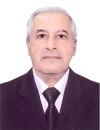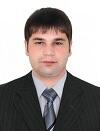1st year master's student, Samarkand State University, Uzbekistan, Samarkand
Sono-chemical extraction of biologically active substances from rose processing waste
ABSTRACT
Evaluation of the effectiveness of ultrasonic cavitation action on the process of extraction of biologically active substances from waste of primary processing of rose hips. It is shown that ultrasonic allows the use of extraction at a low temperature (about 40 ° C) without the additional use of other chemical extractants, while ultrasonic cavitation provides a significant reduction in the duration of the extraction process, the possibility of lowering the extraction temperature favorably affects the preservation of the useful qualities of the target product. The chemical composition of biologically active substances has been determined. Found vitamins (ascorbic acid, thiamine and riboflavin), carbohydrates, carboxylic acids, amino acids, flavonoids, carotenoids, pectin substances. Comparison of the antioxidant activity of the dry product relative to the pharmacopoeial purity ascorbic acid was carried out.
АННОТАЦИЯ
Проведена оценка эффективности ультразвукового кавитационного воздействия на процесс экстракции биологически активных веществ из отходов первичной переработки плодов шиповника. Показано, что использование ультразвука позволяет осуществить экстракцию при пониженной температуре (около 40 оС) без дополнительного использования других химических экстрагентов, при этом ультразвуковая кавитация обеспечивает существенное сокращение продолжительности процесса экстракции, а возможность понижения температуры экстракции благоприятно сказывается на сохранение полезных качеств целевого продукта. Определен химический состав биологически активных веществ. Найдены витамины (аскорбиновая кислота, тиамин и рибофлавин), углеводы, карбоновые кислоты, аминокислоты, флавоноиды, каротиноиды, пектиновые вещества. Проведено сравнение антиоксидантной активности продукта сухого продукта относительно фармакопейной аскорбиновой кислоты.
Keywords: ultrasonic cavitation, extraction, biologically active substances, wastes of primary processing of rose hips.
Ключевые слова: ультразвуковая кавитация, экстракция, биологически активные вещества, отходы первичной переработки плодов шиповника.
Introduction
In the latter, there is an increased interest in medicinal raw materials, the study of its chemical composition, pharmacological properties and its complex processing [1-3].
It is known that rose hips are used as a multivitamin concentrate in primary processing. However, waste from such processing is not used and further processing is not undertaken. However, such waste can contain a large amount of biologically active substances, including vitamins [3].
The aim of this study was to obtain an extract from the waste of primary processing of rose hips based on an ultrasonic aqueous extract from this raw mate-rial and to study its chemical composition.
For preparing this article, the algorithm for the study of raw materials and finished products, described in [4], was used.
Object and research methods
The object of the study was the wastes of the primary processing of the fruits of the rose hip Rósa canína (dog rose), which grows widely in the Central Asian region [5]. Rose hips have been used to treat dog bites [6].
The extract from the waste of the primary processing of wild rose was obtained by ultrasonic water extraction at a temperature not higher than 400 C and the ratio of components - raw material: extractant 1: 5. Sounding was carried out for 45 minutes at 40 kHz using an ultrasound bath DSA50-SK-1.8L (China). Removal of free and adsorption water was carried out on an IKA RV8 rotary evaporator (Germany) to constant weight at 40 ° C.
A general view of the equipment used is shown in Figures 1 and 2.
|
|
|
|
Fig. 1. Ultrasonic cleaner DSA50-SK-1.8L Fig. |
Fig. 2. Rotary evaporator IKA RV8 |
Results and discussion
The yield of dry extractive substances was 15.3% in terms of raw materials. The dry extract was analyzed for the content of the residual amount of biologically active substances, in particular, vitamin C, carbohydrates, amino acids, as well as the total antioxidant activity relative to pharmacopoeial purity ascorbic acid.
Determination of vitamin C content in dry aqueous extract from rosehip meal: was carried out according to the method traditionally used in pharmacopoeia, as the main BAS of rosehip [7].
Ascorbic acid was isolated from the dry extract based on the primary processing of rose hips by extraction with 5% acetic acid. Ascorbic acid in the filtrate was determined titrimetrically according to Tillmans using sodium 2,6-dichloro-phenolindophenolate. The ascorbic acid content was 15.2 ± 0.4%.
Ascorbic acid was also determined spectrophotometrically in acetate buffer at a wavelength of 520 nm. The content of ascorbic acid is 15.5 ± 0.6% [8].
Determination of carbohydrates: the total carbohydrate content was determined spectrophotometrically using the phenol sulfuric acid method at a wavelength of 490 nm. The carbohydrate content was 15.65 ± 0.65%. Separation of carbohydrates into individual components was carried out using paper chromatography. A mixture of n-butanol - acetic acid - water (4: 1: 5) was used as a mobile phase. The developer was aniline-diphenylaminophosphate reagent. When compared with standard substances, glucose and fructose were found in the dry extract. The quantitative content of carbohydrates was determined spectrophotometrically using the orcin reagent [9] : glucose – 1.08%, fructose - 13.5%, aldosugar - 0.95%.
Amino acid composition: amino acids were determined by TLC using the mobile phase propanol-1 ammonium hydroxide (7: 3) [10,11]. The developer is ninhydrin. Threonine, valine, methionine and lysine have been identified in comparison with standard substances [12]. The total amino acid content was 15.4%.
Antioxidant activity: total AOA was assessed using a sensor of total antioxidant activity ΣAOA and ascorbic acid as a standard [13]. The total AOA was 15.6% of the pharmacopoeial ascorbic acid.
For clarity, the results of determining the chemical composition of the dry extract are presented in Table 1.
Table 1.
The chemical composition of a dry aqueous extract obtained from the secondary processing of rosehip waste by the method of ultrasonic exposure
|
№/№ |
Indicator |
Value |
|
1. |
The content of ascorbic acid (determined by titrimetric method) |
15.2±0.4% |
|
2. |
The content of ascorbic acid (determined by the spectrophotometric method) |
1505±0,6% |
|
3. |
The content of carbohydrates |
15.65±0,65%. |
|
4. |
Including: |
|
|
|
glucose |
1.08% |
|
|
fructose |
13.5% |
|
|
aldosaccharum |
0.95% |
|
5. |
The total amino acid |
15.4% |
|
6. |
Total AOA relative to pharmacopoeial ascorbic acid. |
15.6% |
Conclusions
Using the cavitation effect of ultrasound, aqueous extracts of biologically active substances were obtained from the waste of the primary processing of rose hips of the Rósa canína variety. By the method of rotary evaporation, the dry residue of extractives was obtained in the amount of 15.3% in terms of the feedstock. It has been shown that the use of ultrasound allows extraction at a low temperature (about 40 ° C) without the additional use of other chemical extractants, while ultrasonic cavitation provides a significant reduction in the duration of the extraction process, and the possibility of lowering the extraction temperature favorably affects the preservation of the useful qualities of the target product. The chemical composition of the dry extract has been studied and it has been shown that the secondary raw material of the processing of rose hips retains some of the valuable biologically active substances, which makes it possible to recommend it for the creation of multivitamin food supplements for both humans and animals.
References:
- Shnaidman L.O. Complex processing of rose hips for vitamin preparations .-"Works of VNIVI" - M.: Pishchepromizdat, 1961. - No. 8. -P.66-71. [In Russian].
- Petunina A.G., Soshnikov D.Ya. Issues of complex processing of rose hips and other vitamin plant raw materials // Vitamin plant resources and their use. -M .: Publishing house of Moscow State University, 1977 -P. 292-296. [In Russian].
- Martinson E.A. Technology of complex processing of rose hips // Diss. …. candidate of technical sciences. –M: 2005. -140 p. [In Russian].
- Wild useful plants of the USSR / Ed. I.A. Gubanov and T.A. Rabotnov. - M .: “Mysl “, 1976. - P. 181. [In Russian].
- Howard M. Traditional Folk Remedies. - Century, 1987. - P. 133.
- State Pharmacopoeia of the USSR. - M: Medicine, 1988. [In Russian].
- Akhmedova R.I., Mirzaeva H.A. Spectrophotometric determination of ascorbic acid in dosage forms // Universum: chemistry and biology: electron. scientific. zhurn. 2016. No. 12 (30). [In Russian].
- OFS.1.2.3.0019.15 Determination of sugars by spectrophotometric method. / https://pharmacopoeia.ru/ofs. Date of treatment 04/17/2021 [In Russian].
- Kirchner Y. Thin-layer chromatography. - M .: Mir. - 1981 .- P. 478, 550.
- Trineeva O.V, Sinkevich A.V., Slivkin A.I. Investigation of the amino acid composition of extracts from plant objects // Chemistry of vegetable raw materials. - 2015. - No. 2. - Р. 141-148. [In Russian].
- Chemical analysis of medicinal plants. / Ed. N.I. Grinkevich, L.N. Safronovich. M.: Higher. shk. - 1983.- 174 p. [In Russian].
- Aronbaev D.M., Ten V.A., Yulaev M.F., Aronbaev S.D. Investigation of the antioxidant activity of vegetation in the Fergana Valley // Young Scientist. - 2015. - No. 4 (84). - P. 30-34. [In Russian].

/Zhuraeva.files/image001.jpg)
/Zhuraeva.files/image002.jpg)


